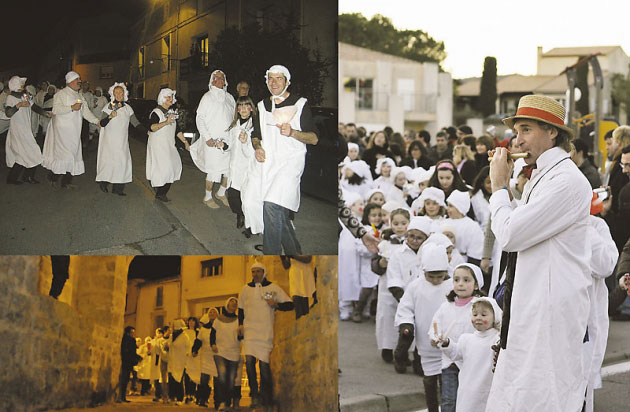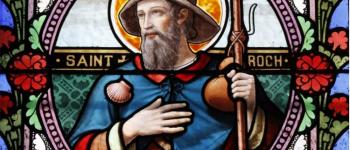
Carnival lasts 4 days, but requires months of preparation. The "carnavaliers" voluntarily make the floats of the corso and get together to assemble irons, wood, cardboard and other materials necessary to make the structures on which thousands of paper flowers will be glued.
Each association, district, group chooses the theme of its float and during the parade they are around their work, dressed according to the theme of their float. They parade through the streets of the village and dance to the sound of oboes and "peñas".
The carnival begins on Saturday evening with the enthronement of the Master of Ceremonies and continues with some highlights:
- The cavalcade, a parade of floats in bloom on Sunday afternoon.
- Children's and Adult Costume Ball on Monday
- Shirt waving and easel waving for children and adults on Tuesdays.
- Judgment and cremation of the bench on Wednesday night.
Le Branle la Chemise
On Shrove Tuesday, the inhabitants of Poussan perform a traditional dance in the streets, "le branle de la chemise", which is not practiced anywhere else.
To take part in it, you must be dressed, according to the custom, in a white nightgown. The men wear a woman's nightgown and a charlotte on their head, the women wear a man's nightgown and a nightcap.
They all have a candle in their hand and are dressed with flour on their face and red cheeks.
A village elder leads the parade and the dancers hang on to each other by the side of the shirt and jump to the sound of the oboe. They dance through the streets of the village and knock on doors to announce their passage.
All the participants arrive, after going around the old village, in the village hall and only stop dancing when the musicians stop the music.
They sing at the top of their voices the song of the shirt shake, accompanied by the drums and oboes from Languedoc:
Le Chevalet
The dance of the easel, also known as the "cheval-jupon" is a traditional custom that is said to have originated in the late Middle Ages in the region.
For an easel to be performed properly, you need 5 good dancers dressed with trousers, a shirt, white sneakers, a vest, a tie and a red taillole, and a canoeist.
One dancer symbolizes the horse, another the oat-giver, a servant accompanies them with a flycatcher made of a ponytail, another with a brush and a currycomb and the last one holds a pliers and a hammer and represents the blacksmith.
This dance is set like a ballet with figures that follow one another in a fixed order. In schools, children who wish to learn this dance are taught to dance the easel at a very young age.
The Dance of the Ladder
Often the evening ends with the ladder dance. In Poussan, this is danced to the tune of the "cagaraula" (snail), which was the closing tune of almost all the votive festivals in the region, and which is still in use in some places, in Cournonterral for example. Four people, girls or boys, as long as they are volunteers, pass their heads between the rungs of a ladder, jostle the crowd, and spit out a mixture (biscuits, chocolate and other ...) distributed by a 5th comrade in a bucket...
Poussan Tourist Office
4 Boulevard du Riverain
34560 Poussan
Tel: 04 67 78 39 74
http://www.ville-poussan.fr/tourisme/
Translated with www.DeepL.com/Translator
(free version)




